Search Results

- IDNO:
- 000061
- Title:
- Shay No. 4
- Date:
- undated
- Description:
- Locomotive engine on tracks. Cass Scenic R.R. Cass, W.V.
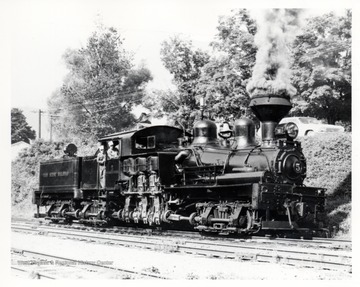
- IDNO:
- 000062
- Title:
- Shay No. 5
- Date:
- undated
- Description:
- Locomotive engine with conductors. Cass Scenic R.R. Cass, WV; Artie Bailey in the door; "Doc" Carlson at the throttle.

- IDNO:
- 000063
- Title:
- Shay Locomotive Deep Run Railroad
- Date:
- undated
- Description:
- Lima 2563/1912 at Shaw, WV for Deep Run Coal Company. (To be flooded over by waters of the Bloominton Dam on the Potomac River now being built by the Army Corps of Engineers. 10/21/71)

- IDNO:
- 000064
- Title:
- Shay No. 8 at Water Tank
- Date:
- undated
- Description:
- Shay Locomotive No. 8 at Water Tank in Spruce, W.V.
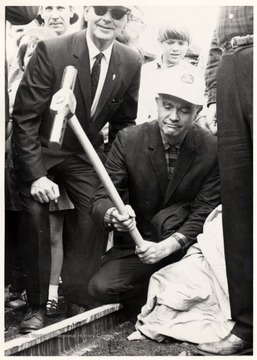
- IDNO:
- 000065
- Title:
- Pounding the Last Spike In the Bald Knob Extension Cass Scenic Railroad
- Date:
- 1968/05/25
- Description:
- Portrait of man in hardhat pounding the last spike in the Bald Knob extension of Cass Scenic R.R.; photograph from John P. Killoran, Promotion Officer, WV State Parks, Charleston, WV 25305.
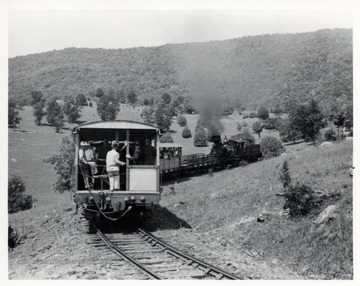
- IDNO:
- 000066
- Title:
- Gum Field Curve on First Switchback, Summer 1966
- Date:
- 1966
- Description:
- Locomotive and passenger cars; Walter Good, conductor, on left side with hand on walkway chain; P.F. "Bus" Long, C&O station agent, to Walter's right, also with hand on chain; photograph from Richard Carter, N. White Hall Rd., Norristown P.O. 3 P.A.

- IDNO:
- 000067
- Title:
- W. Va. Parks Director Kermit McKeever at the Podium
- Date:
- 1968/05/25
- Description:
- Kermit McKeever, WV Parks Director, Whitaker,Cass, WV; photograph from John P. Killoran, Promotion Officer, WV State Parks, Charleston, WV 25305.
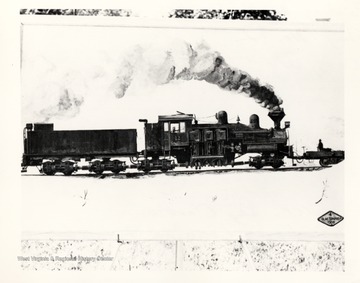
- IDNO:
- 000068
- Title:
- Shay No. 12 , Cass, W. Va.
- Date:
- undated
- Description:
- Photograph of painting by R. Sparks.

- IDNO:
- 000069
- Title:
- Shay No. 5. Builders Photo of Birch Valley Lumber Co. Train.
- Date:
- undated
- Description:
- Birch Valley Lumber Co. Train. P.E. Percy, Lima Locomotive Works; CO 359 = Shop #3189 (12 22)

- IDNO:
- 000070
- Title:
- Shay No. 4
- Date:
- 1967/07
- Description:
- Shay No. 4 crossing a railroad bridge. Cass Scenic R.R. Cass, WV; Richard Carter, N. Whitehall Rd, Norristown, R.D. 3, P.A.
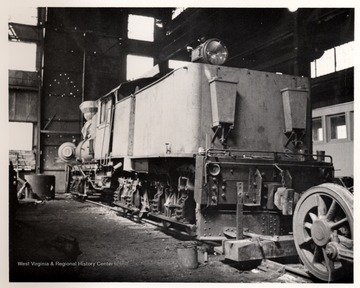
- IDNO:
- 000071
- Title:
- Shay No. 1 in Shop at Cass, W. Va.
- Date:
- undated
- Description:
- Shay No.1 in the Shop at Cass, WV; Phillip V. Bagdon, 7918 New Orleans Dr., Alexandria, VA 22308.

- IDNO:
- 000072
- Title:
- Shay No. 1 and 4, Cass Scenic Railroad
- Date:
- 1970
- Description:
- Shay Locomotives No. 1 and 4 pushing people in a cart up a hill. Cass, W.V.











